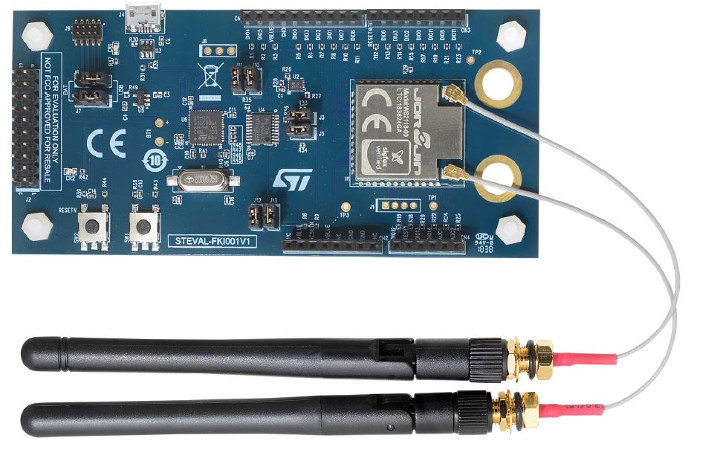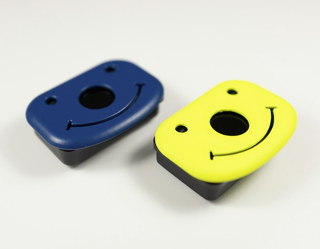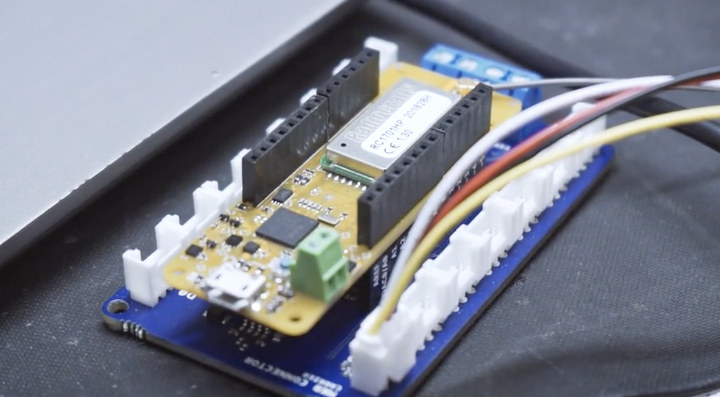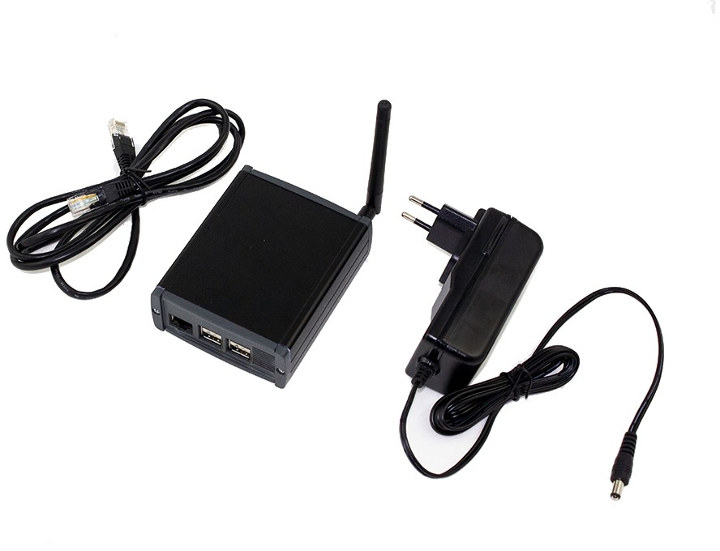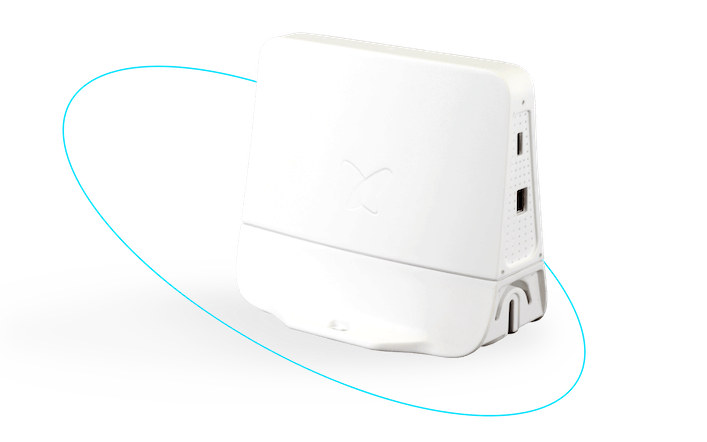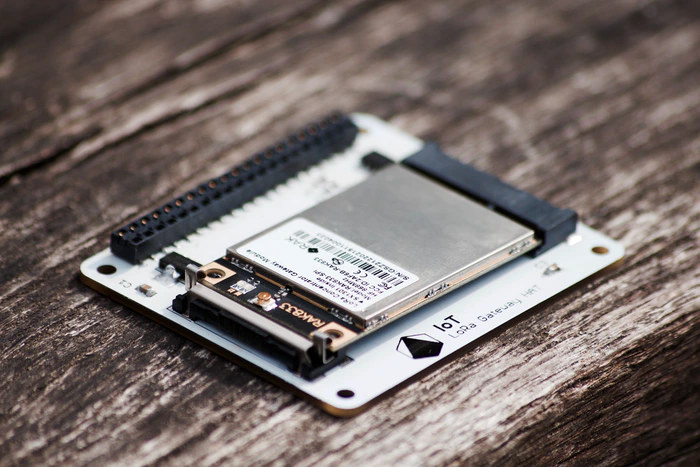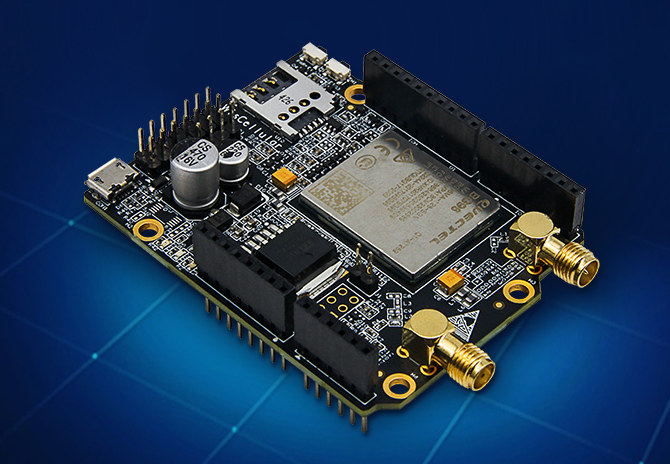STMicro has just launched a new development kit – STEVAL-FKI001V1 – that integrates two radios, one at 2.4 GHz for Bluetooth Low Energy (BLE), and another sub-GHz radio for LPWAN IoT standards such as Sigfox. The devkit targets the development of IoT devices such as smart sensors, finders, and trackers for smart-home or smart-building scenarios, asset-tracking, energy-management, smart-farming and industrial monitoring, and control use cases. STEVAL-FKI001V1 devkit key features & specifications: Jorjin WS2118-00 Sigfox & BLE module Embedded BlueNRG-132 Bluetooth LE Arm Cortex-M0 SoC with up to +8 dBm BLE RF output power, receiver sensitivity of -88 dBm Embedded S2-LPQTR ultra-low power sub-1 GHz transceiver tuned for 826-958 MHz frequency bands Up to +16 dBm sub-1GHz RF output power, receiver sensitivity down to -130 dBm Modulation schemes: 2-(G)FSK, 4-(G)FSK, OOK, and ASK Air data rate from 0.1 to 500 kbps Ultra-low power consumption: 7 mA RX, 10 mA TX @ +10 dBm; low duty cycle RX/TX operation mode, […]
Wistrio LoRa Tracker RK5205 Complies with 96Boards IoT Edition Specification
It’s not hard to find a LoRa GPS tracker board such as Rak Wireless RAK811 these days, but if for some reasons, you’d also like your board to comply with 96Boards IoT Edition form factor, Rak Wireless just launched Wistrio LoRa Tracker RK5205 for $49.50 plus shipping on Aliexpress and Amazon. Wistrio specifications: LoRa Module – RAK5205 module with SX1276 LoRa chipset, STM32L1 Arm Cortex-M3 microcontroller LoRa Connectivity LoRaWAN 1.0.2 protocol OTAA/ABP activation Programmable bitrate up to 300 Kbps Support for global bands: EU433, CN470, EU868, US915, AS923, AU915, KR920, and IN865 SMA & iPEX antenna options Location – Quectel L76-L GNNS chip supporting GPS, GLONASS, Galileo and QZSS system (pin-to-pin compatible with u-blox Max7) Sensors – LIS3DH 3-axis accelerometer, BME680 environmental sensor reporting gas, pressure, humidity and temperature data Expansion Header – I2C, GPIOs, UART and ADC Power Supply – Rechargeable battery via micro USB port, or 5V […]
PyGo Wearable Devices Create LoRa Mesh Networks (Crowdfunding)
Pycom has made some interesting IoT boards running MicroPython in the past starting with WiFi capable WiPy in 2015, and followed by various others supporting various wireless standard including Bluetooth, LoRa, Sigfox, and NB-IoT with LoPy and Fipy. The company launched all their boards via crowdfunding campaigns, and they are now back on Kickstarter for their PyGo plug-n-play wearable devices creating PyMesh networks with up to 12km range between nodes, and managed using Pylife mobile app. Typical use cases include basic connectivity (e.g. messaging) in remote areas without cellular access, and assets / pets / kids location tracking, There are two version of PyGo: PyGo1 with mesh networking only, and PyGo2 that adds cellular network access. Pygo hardware specifications: SoC – Espressif Systems ESP32 dual core WiFi 4 + BLE SoC System Memory – 64 Mbit (8MB) RAM Storage – 8MB flash Display – 128×36 OLED display Connectivity PyMesh up […]
Allwize K2 IoT Board Supports 169MHz Wize LPWAN Protocol (LoRa alternative)
LoRa, Sigfox, and NB-IoT are probably the most popular low power long range wireless protocols for the Internet of Things, but there are several others, including one I had never heard of: Wize. The Wize Low Power Wide Area Network (LPWAN) protocol has been created in late 2017, leverages the “old and refurbished” 169 MHz frequency, support up to 20 km range, 20-year battery life, and is managed by the Wize Alliance with members including STMicroelectronics, Suez, Sagecom, Renesas, Analog Devices, Silicon Labs and many others. Despite being a recent protocol, the table below claims 3 millions of deployment for Wize, and showcases some of differences against LoRa, NB-IoT, and Sigfox. You may be confused as how the standard was created in at the end of 2017, but there are so many deployments, and 13 years experience. It appears Wize is derived from the older EN 13757 standard for gas […]
Arduino PRO Gateway for LoRa Features Raspberry Pi 3 Board
Arduino has just introduced the Arduino PRO Gateway for LoRa based on Raspberry Pi 3 development board, a LoRa gateway mPCIe module, and a metal enclosure. The strange thing about this product is that it does not feature any Arduino MCU, so why did Arduino design it? That’s because it works as a LoRa gateway for their Arduino MKR WAN 1300 IoT nodes. The gateway is sold as a kit with a LoRa gateway Embit EMB-LR1301-mPCIe card with SX1301 baseband chipset, an adapter for Raspberry Pi, an aluminum enclosure, a Raspberry Pi 3 model B+, a 5V power supply, an Ethernet cable, and an external antenna. Specifications for the LoRa part of the gateway: Chipset – Semtech SX1301 Modulation – LoRa Spread Spectrum, FSK, GFSK 868MHz (EU) / 915MHz (US) Number of Channels – 8 LoRa Channels Operating Frequency – 868MHz (EU) / 915MHz (US) Frequency Range – 860MHz to 1020MHz Operating […]
Sigfox Introduces Access Station Micro Sigfox Gateway
There are plenty of long range LPWAN standards for the Internet of Things, but the most common ones include LoRaWAN, NB-IoT, and Sigfox. LoRaWAN lead the way in terms of deployments, while NB-IoT and eMTC leverage existing cellular infrastructure but cost a bit more to operate. Sigfox works with $2 modules, but AFAIK so far you had to subscribe to the company network, and if your area was not covered you were out of luck. Sigfox Access Station Micro gateway promises to change the situation, as companies can now add their own Sigfox gateway(s) where coverage is not available, and this could make Sigfox more popular, especially if one or more communities similar to The Things Networks form(s) around it. Sigfox Access Station Micro SMBS-T4 specifications: Radio characteristics: Standard – Sigfox Ultra Narrow Band Protocol for M2M and IoT Max range of operating frequencies – 865 to 928 MHz Max […]
Pi Supply IoT LoRa Boards are made for Raspberry Pi & BBC Micro:bit Boards (Crowdfunding)
We’ve already covered plenty of LoRa boards or solutions designed for nodes or gateways such as TTGO T-Beam ESP32 + LoRa board, RAK Wireless RAK811 GPS Lora tracker board, MatchX Matchbox LoRa gateway, and many others,, but Pi Supply offers yet more options with LoRa node and gateway add-on boards designed to work with Raspberry Pi, Arduino, and BBC Micro:bit boards. Pi Supply LoRa Gateway HAT for Raspberry Pi The IoT LoRa Gateway HAT is based on RAK Wireless RAK833 mPCIe LoRa gateway concentrator module and connects to Raspberry Pi 3 B/B+ board via the 40-pin header. There are two hardware version using 868 MHz or 915 MHz frequencies, but as we’ve seen in previous reviews those are configurable for other frequencies such as AS923 or IN865. Pi Supply IoT LoRa Node pHAT for Raspberry Pi LoRa Node pHAT is designed for node specifically, and with a smaller form factor […]
WisCellular Certified Global LTE IoT Arduino Shield Enters Beta Testing
RAK Wireless introduced WisLTE Arduino shield last year based on Quectel BG96 module with support for NB-IoT (Cat NB1), eMTC (Cat M1), and 2G fallback as well as GPS location. WisLTE worked globally, but the company did not go through the certification process, at least not for the global market, meaning the shield could not be used in commercial applications. That’s why Rak Wireless has been working on WisCellular shield, also based on Quectel BG96, but this time with global certification. WisCellular specifications: Cellular Module – Quectel BG96 (based on Qualcomm MDM9206) Cellular Network 2G/GSM (GPRS/EPGRS) 4G/LTE-M (Cat M1) NB-IoT (Cat NB1) Global Bands EDGE/EGPRS: 850/900/1800/1900MHz LTE FDD: B1/B2/B3/B4/B5/B8/B12/B13/B18/B19/B20/B26/B28 LTE TDD: B39 (For Cat M1 Only) Data Rate Cat M1: Max. 300Kbps (DL), Max. 375Kbps (UL) Cat NB1: Max. 32Kbps (DL), Max. 70Kbps (UL) EDGE: Max. 296Kbps (DL), Max. 236.8Kbps (UL) GPRS: Max. 107Kbps (DL), Max. 85.6Kbps (UL) Voice – […]


